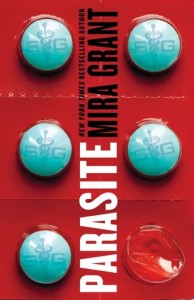February is “Women in Horror” Month. In honor, I thought I’d put up a list of some of my favorite female horror writers. Note: this is not an exhaustive list. As I’m posting this kind of off-the-cuff as it were, I’m sure I’ll accidentally leave some wonderful creators out. It’s not intentional at all, and certainly not meant to be a slight.
Damien Angelica Walters: While Damien’s short stories may cross genres, her novels have been pretty solidly horror: Ink was about possessed tattoos, Paper Tigers about a possessed photo album, and her most recent, The Dead Girls Club, is about storytelling and the ways in which real-life and sleepover-story horrors relate and interact. Her two short story collections, Sing Me Your Scars and Cry Your Way Home, contain a number of psychological and supernatural horror stories.
Lucy A. Snyder: I haven’t checked out any of her novels (yet), but Lucy writes some of the most disturbing short stories I’ve ever read. “Magdala Amygdala” is one of the few zombie stories I will intentionally reread, knowing it is going to gross me out. Check out her collection Soft Apocalypses.
Mira Grant: Sure, some of the short fiction Seanan McGuire publishes under her own name contains horror elements, usually more on the “dark fantasy” side. But when she writes as “her own evil twin sister,” Mira Grant, the horror takes center stage and the other genre elements (science fiction and fantasy) are extra flavor. The Newsflesh novels (zombies); the Parasitology trilogy (medicine gone amok); ); and a string of novellas from Subterranean Press that cover mermaids, slashers, plagues, and Lovecraftian horror (including Rolling in the Deep, Final Girls, In the Kingdom of Needle and Bone, and In The Shadow of Spindrift House) are among my favorite horror books ever.
Elizabeth Hand: Just on the strength of Wylding Hall alone, Elizabeth Hand is one of my favorite horror writers. I need to read more of her longer work.
Sabrina Vourvoulias: Sabrina’s stories co-mingle Latinx life and legends with alternate history or every-day life, but her near-future novel INK is a horror potentially unfolding in front of us on a daily basis, and everyone should read it. Check out her short fiction in various magazines and anthologies as well.
Kaaron Warren: I reviewed Kaaron’s most recent novella, Into Bones Like Oil, a few days ago here on the blog. Every story of hers I’ve read had snuck into my hind-brain and stayed there.
Silvia Moreno-Garcia: From the near-future vampires of Certain Dark Things to the music-based magic of Signal to Noise and everywhere in between, Silvia writes some of the most compelling horror out there. She’s also the editor of The Dark magazine, cultivating horror from marginalized voices.
Shirley Jackson: The Haunting of Hill House. We Have Always Lived in the Castle. “The Lottery.” Of course Jackson is on any list of favorite horror writers I might compile.
Octavia Butler: I am not sure how many years it’s been since I read Fledgling and I still can’t get certain scenes out of my mind. Butler is an author I long-since should have read more of, and I’m working to correct that.
Caitlín R. Keirnan: Caitlín’s short fiction, collected in volumes like The Very Best of Caitlín R. Kiernan, is phenomenal. Her novel The Drowning Girl haunted me for months after finishing it.
Ellen Datlow: Okay, Ellen is not an author. But she curates, both in anthologies like The Best Horror of the Year series and as a novella editor for Tor.com, a wide range of horror from the explicit to the classic to the subtle. No list of “women in horror” would be complete without Ellen’s name on it.
Okay, your turn readers. There are a lot of female horror writers I’ve read who aren’t on this list, sins of omission based on a deadline and work-loads and such, and plenty who I’ve never read. Who do you think I should be reading? Give me names in the comments!



